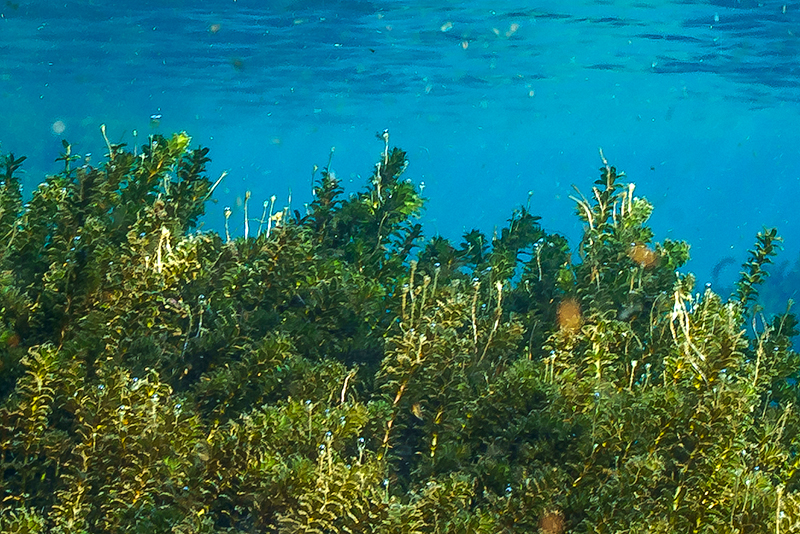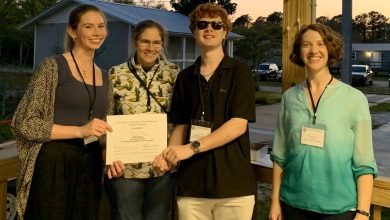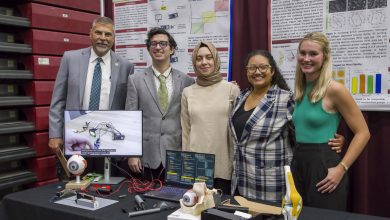Indian River Lagoon Research Takes Center Stage at Annual Conference.
With science and solutions on the mind, lagoon focused scientists, engineers, conservationists and researchers from across Florida and the United States came together for the Technical Conference on Coastal Water Quality, TechCon, Sept. 28, 2018.
The daylong conference, hosted by Florida Tech’s Indian River Lagoon Research Institute and organized by professors Robert Weaver and Kelli Hunsucker, explored a potential fix for the ailing lagoon centered on five themes: combating coastal degradation; muck removal and control; novel approaches to water quality improvements; policy, permitting and planning, governance; and nutrient removal.
“We know that there are a lot of groups out there doing remarkable research to understand the Indian River Lagoon,” Hunsucker said. “It’s important to keep studying the system, but our goal with TechCon is to combine technology with that research to develop solutions to the issues that our coastal waterways are facing.”
While researchers at TechCons past have discussed potential solutions to the lagoon’s problems, this year, they’ve implemented some. In 2016, Brevard County voters approved a half-percent sales tax that in 2017 brought in about $44 million. This year’s TechCon included brief “Tech Teaser” presentations about some of the projects implemented with the tax money.
“I know a lot of people were really excited to see what was being done with the money and how we’re moving forward,” Hunsucker said.
Keynote Speaker Lew Linker from the Chesapeake Bay Program discussed similar restoration efforts in the Chesapeake Bay watershed, covering commonalities between what is the largest estuary in the United States and the Indian River Lagoon and how researchers can learn from the multigenerational challenges faced in both watersheds.
Other TechCon presentations included innovative techniques to remove muck, methods to replace plastic utilized in oyster reef restoration, enhanced septic tank technologies, defining indicators for the health of the Indian River Lagoon, comparing hydrodynamic characteristics of oyster reefs of different ages, climate-based vulnerability assessments and Indian River Lagoon septic policies.
“A lot of times, people hear about what’s happening in the lagoon, and it seems very daunting and overwhelming,” Hunsucker said. “To me, the presentations from TechCon seem very hopeful. So many people are pushing solutions from different angles. We all have different approaches, but they’re all to help improve coastal water quality.”
This article was originally featured in the 2019 Winter Edition of the Florida Tech Magazine. Click below to read the full edition.






